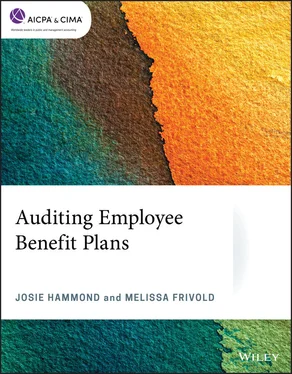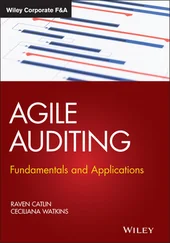FASB ASC 960, plan accounting: Defined benefit pension plans
FASB Accounting Standards Codification (ASC) 960 provides guidance on financial accounting and reporting for defined benefit plans and includes the following subtopics:
1 Overall
2 Accumulated Plan Benefits
3 Net Assets Available for Plan Benefits
4 Terminating Plans
5 Presentation of Financial Statements
6 Receivables
7 Investments – Other
8 Property, Plant, and Equipment
FASB ASC 962, plan accounting: Defined contribution pension plans
FASB ASC 962 provides guidance on accounting and reporting for defined contribution plans and includes the following subtopics:
1 Overall
2 Terminating Plans
3 Presentation of Financial Statements
4 Notes to Financial Statements
5 Receivables
6 Investments – Other
FASB ASC 965, Plan accounting: Health & welfare benefit plans
FASB ASC 965 provides guidance on accounting and reporting for health and welfare benefit plans and includes the following subtopics:
1 Overall
2 Net Assets Available for Plan Benefits
3 Plan Benefit Obligations
4 Terminating Plans
5 Presentation of Financial Statements
6 Receivables
7 Investments – Debt and Equity Securities
8 Investments – Other
9 Property, Plant, and Equipment
Fair value measurements
FASB ASC 820, fair value measurement
FASB ASC 820 applies whenever other standards require or permit assets or liabilities to be measured at fair value. This guidance establishes a fair value hierarchy and gives the highest priority to quoted market prices. FASB ASC 820 indicates that the determination of fair value should be based on assumptions (or inputs) market participants would use in pricing the asset or liability. Such inputs can be divided between those that are developed using market data (known as observable inputs) and those for which market data is not available and that the reporting entity develops based on the best information available (known as unobservable inputs). FASB ASC 820-10-35 describes valuation techniques that should be used to measure fair value. The guidance requires that valuation techniques should always maximize the use of observable inputs and minimize the use of unobservable inputs.
The fair value hierarchy in FASB ASC 820 categorizes and prioritizes these inputs into three broad levels, as follows:
Level 1 inputs. Quoted prices (unadjusted) in active markets for identical assets or liabilities that the reporting entity can access at the measurement date. Quoted market prices in an active market provide the most reliable evidence of fair value and should be used without adjustment to measure fair value whenever available.
Level 2 inputs. Inputs other than quoted prices included within Level 1 that are observable for the asset or liability, either directly or indirectly (such as quoted prices for similar assets or liabilities in active markets).
Level 3 inputs. Unobservable inputs used when relevant observable inputs are not available. Unobservable inputs should be developed based on the best information available.
FASB ASC 820-10-50 expands the disclosure requirements for assets and liabilities measured at fair value. Disclosures include the fair value measurements, the hierarchy within which they are categorized, significant transfers between levels, the reasons for those transfers, and the policy for determining when those transfers have occurred. A reconciliation from the opening to closing balances is required for Level 3 measurements. A description of the valuation process and a table for unobservable inputs is also required for Level 3 measurements. Public entities have certain additional disclosures. Readers should consult the full text of FASB ASC 820 and subsequent Accounting Standards Updates (ASUs) for further guidance and disclosure requirements.
Help Desk.In August 2018, FASB issued ASU No. 2018-13, Disclosure Framework—Changes to the Disclosure Requirements for Fair Value Measurement, to modify the disclosure requirements on fair value measurements in FASB ASC 820, Fair Value Measurement . FASB ASU No. 2018-13 contains amendments that remove, modify or add disclosure requirements including those relating to: transfers between levels of the fair value hierarchy, level 3 fair value measurements and entities that calculate net asset value. The amendments in FASB ASU No. 2018-13 are effective for all entities for fiscal years beginning after December 15, 2019. Early adoption is permitted. Readers are encouraged to consult the full text of this ASU on FASB’s website at www.fasb.org. See the Recent Developments section of this chapter for discussion of new standards that have a significant impact on the FASB ASC 820 disclosures for employee benefit plans.
Although plans generally report investments at fair value in both their financial statements and regulatory filings, the provisions of FASB ASC 820 may have a significant effect on a plan’s financial statements depending on the types of investments held by the plan, such as hard-to-value alternative investments.
Help desk.The AICPA issued Technical Questions and Answers (Q&A) section 6931.11, “Fair Value Measurement Disclosures for Master Trusts” (AICPA, Technical Questions and Answers ), to provide guidance on the required fair value measurement disclosures to be made when a plan holds investments in a master trust. This Q&A has not been updated for the amendments of FASB ASU No. 2017-06.
FASB ASC 820 provides guidance on determining fair value when the volume and level of activity for the asset or liability has significantly decreased. Guidance is also included in identifying transactions that are not orderly.
FASB ASC 820 also provides guidance on using the net asset value (NAV) per share provided by investees, as a practical expedient, to estimate the fair value of an alternative investment that does not have a readily determinable fair value. Such investments include interests in hedge funds, private equity funds, real estate funds, venture capital funds, commodity funds, offshore fund vehicles, and funds of funds. Benefit plans often invest in such alternative investments.
FASB ASC 820 requires disclosures by major category of investments and about the attributes of those investments, such as the nature of any restrictions on the investor’s ability to redeem its investments at the measurement date, any unfunded commitments, and the investment strategies of the investment. Investments valued at NAV as a practical expedient are no longer categorized within the fair value hierarchy. However, sufficient information must be provided to permit reconciliation of the fair value of assets categorized within the fair value hierarchy to the amounts presented in the statements of net assets available for benefits. Investments that calculate NAV per share (or its equivalent), but for which the practical expedient is not applied, will continue to be included in the fair value hierarchy.
For investments that file Form 5500 as a direct filing entity and for which fair value is estimated using the NAV (or its equivalent) as a practical expedient, disclosure of the investment’s strategy is no longer required, in accordance with FASB ASC 960-325-50-6, FASB ASC 962-325-50-9, and FASB ASC 965-325-50-4.
Note:See the Recent Developments section of this chapter for discussion of new standards that have a significant impact on the FASB ASC 820 disclosures.
Help desk.In November 2017, the AICPA updated the following Qs and As of section 2200, Long-Term Investments :
Читать дальше











